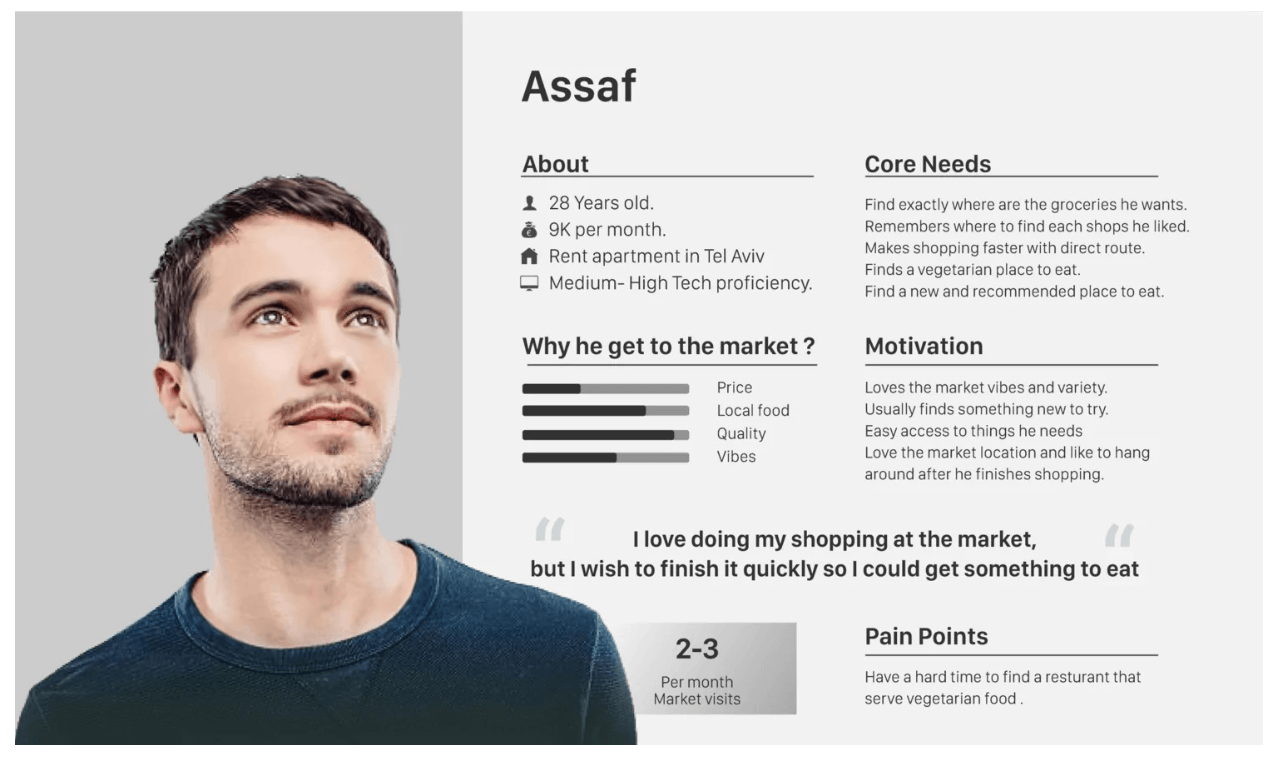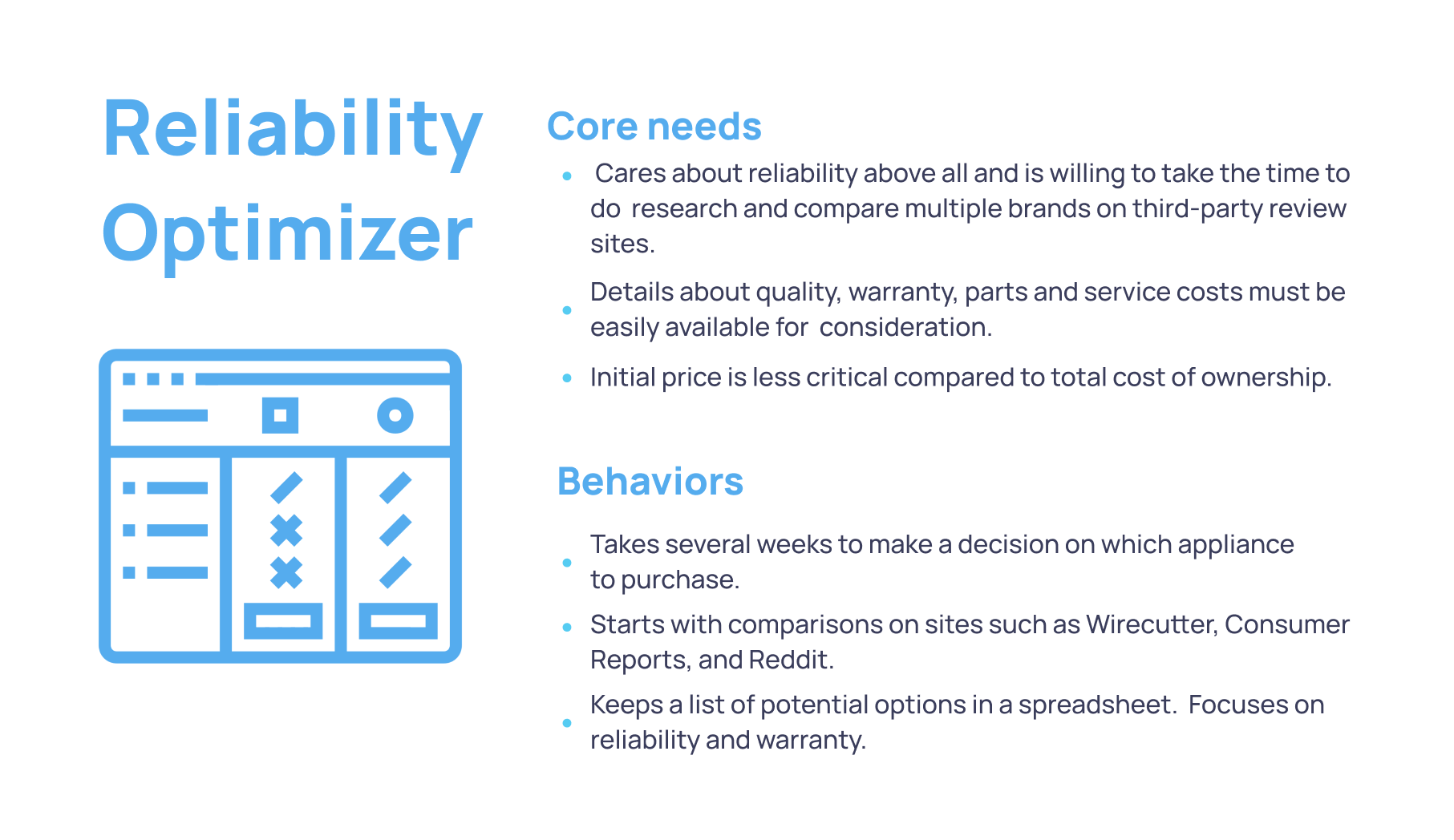Why personas fail, and how to evolve them
We’ve created beautiful, well thought through personas. And we’ve seen what happens next.
Nothing.
They sit in Notion. Or on a Miro board. Or buried in a slide from last year. No one uses them. No one refers to them in product decisions. And deep down, most teams aren’t sure what they were meant to do with them in the first place.
The problem with personas
It’s not just that they get forgotten. It’s what they focus on.
Most personas are built around fiction: names, ages, quotes, supermarket preferences, even football teams. They get specific in all the wrong ways - while skipping the things that actually matter for designing good products.
They reduce real user behaviour to imagined personality traits.
And they rarely account for edge cases, accessibility, or change over time.
Even when they're well-researched, they often just sit there. There's no clear way to use them. No connection to feature prioritisation, to product direction, or to team decision-making.
They're polished artifacts, not actionable tools.
So why do we keep using personas?
Because the intention behind personas is still a good one.
At DPP, we’ve built personas. We know why people reach for them. It’s a way to say: “We care about our users.” It’s a way to communicate user insights across a team.
But good intentions aren't enough.
If personas aren’t helping your team make better product decisions, it’s time to evolve.
Why personas were created in the first place
Personas weren’t invented to confuse teams. Their original goal was simple and powerful: empathy.
A persona is a fictional character based on real data, designed to help teams remember who they’re building for. Instead of relying on vague demographics or their own assumptions, teams could “meet” users through a single reference point — a name, face, backstory, and set of goals.
As Interaction Design Foundation puts it, personas are there to:
Help teams focus on real user needs
Prevent self-referential design (designing as if you are the user)
Provide a shared language across design, product, and engineering
The idea was never to stereotype or reduce users, it was to keep them front and centre during the design process.
The problem? That vision rarely survives first contact with a deck template.
From empathy to oversimplification
The heart of a persona is empathy.
Personas started as a way to humanise our users . We give them names, faces, and stories, because it helps us care. It keeps us focused on their needs, not just our roadmap. It’s easier to advocate for Leila, who’s frustrated and under pressure, than for “User Segment 3.” It also makes it much easier to remember Leila.
But somewhere along the way, the format started working against the purpose. What began as a useful design tool turned into a design stereotype.
Instead of helping us understand patterns, personas can make us design for just one person. They pull us toward surface-level traits - age, job title, even supermarket - and away from what really drives behaviour.
In our experience, they often miss the messy, complex, contextual stuff that great products are built around. They’re great for feeling something. Less great for doing something.
So what’s the alternative?
That’s where archetypes come in, and they serve a different purpose.
Archetypes vs personas: what’s the difference?
As the Nielsen Norman Group points out, personas and archetypes are different tools for different purposes.
Personas are fictional characters with names, photos, and personality traits.
Archetypes are behavioural models grounded in patterns across user data.
Archetypes drop the fictional details and focus on behavioural patterns. They're more abstract, but often more useful: less risk of stereotyping, more rooted in real user actions and needs. They skip the fluff and go straight to what people actually do, need, and decide — making them more useful for prioritisation and strategy.
Archetypes aren’t empathy tools. They’re clarity tools. So how do we preserve the empathy without the fiction?
We like how Radina Doneva expands the idea of behavioural archetypes and brings in empathy by looking at two lenses:
Mindsets – what users bring into the experience (e.g. price-sensitive, loyal)
States – what they feel during or after (e.g. frustrated, confident)
It’s a more dynamic model. It respects context. It reflects change.
Source: Nielsen Norman Group
Our framework: A practical alternative to personas
At DPP, we use something simpler. And more useful.
It involves behaviour + outcome mapping.
We capture:
What someone’s trying to achieve (job to be done)
What behaviour they exhibit
What triggers their decisions
What constraints shape their options
What success looks like (to them)
Whether our insight is assumed or validated
This becomes a living reference point for teams. It evolves with research. It feeds into decision-making. It helps us design for real users in real situations.
We do recommend finding a way to make them memorable with a catchy name based on user types, roles and behaviours, and remembering to not bias them through gender, age or other superficial characteristics.
To support team-wide recall, consider using simple, non-gendered visuals, characters or mascots - something abstract or symbolic that helps teams remember the type without projecting identity onto it.
Sometimes it's documented in Notion. Sometimes it's built into research databases. But it always stays live. And it always helps guide what we build next.
Want to see how this works in real product environments? Check out how high-functioning product teams nail prioritisation under pressure.
Strengthening your approach: real examples and frameworks in use
These aren’t hypothetical. Product and UX teams are actively using frameworks that align with behaviour + outcome mapping.
Outcome Mapping helps teams define what behavioural changes they’re aiming to support. Rather than just tracking outputs, they track how users behave differently, under what conditions, and with what support.
Jobs‑to‑Be‑Done (JTBD) templates help turn qualitative research into structured outcomes. They clarify what users want to achieve, what gets in their way, and how they define success — all useful inputs into prioritisation.
Behavioural journey mapping adds essential context: decision triggers, emotional states, environmental constraints. These inform product design in ways personas rarely can.
Behaviour-driven product roadmaps shift planning from features to outcomes. These roadmaps tie strategy to observed and desired behaviour changes — and what success looks like from a user’s perspective.
Together, these reinforce the same point:
Real user understanding isn’t about who people are. It’s about what they’re trying to do, what drives them, and what gets in their way.
You can also read how we approach turning messy user feedback into actionable product decisions.
Your first step to better personas?
Your team doesn't need to throw personas out. But they do need to evolve them. To move from fiction to fact. From static to living.
Start small:
Replace fake quotes with real ones
Swap generic bios for observable behaviours
Add decision triggers, constraints, and outcomes
Mark insights as "assumed" or "validated"
Keep everything alive and accessible
This isn’t about jumping on a new trend. It’s about making sure user understanding stays useful.
FAQs
-
A: Alternatives include behavioural archetypes, jobs-to-be-done frameworks, outcome mapping, and user research insights tied directly to decisions and metrics.
-
A: Many personas rely on fictional traits rather than observable user behaviours, making them hard to use when designing features or making strategic decisions.
-
A: Use interviews, usability tests, and behaviour tracking to confirm user motivations, actions, and outcomes. Document what’s assumed vs. validated.
-
A: Yes. If you treat personas as dynamic, behaviour-led tools anchored in real insight, they are still useful, but likely as just one part of a broader research toolkit.
Worried your personas are collecting dust?
You don’t need better personas. You need better user understanding.
Want help creating something actually useful?
We’ll help your product team evolve your personas into more actionable frameworks rooted in real research.
Book a call and let’s talk.





